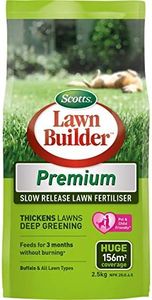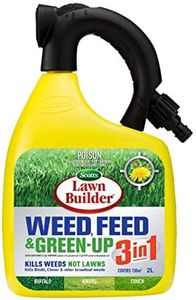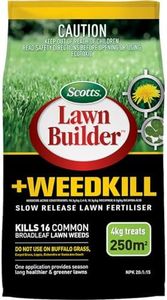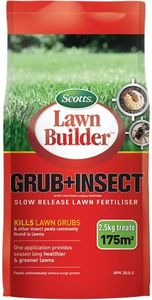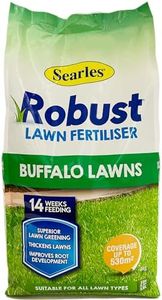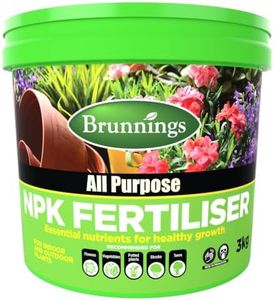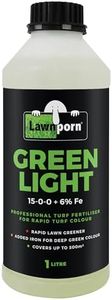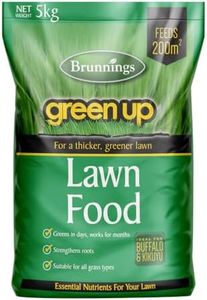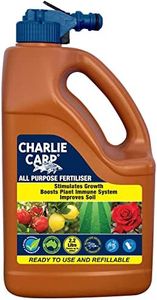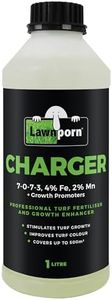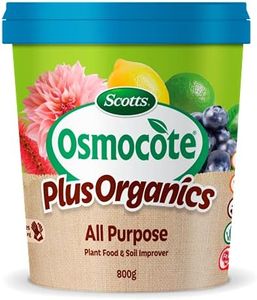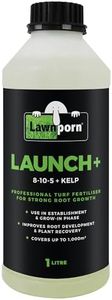We Use CookiesWe use cookies to enhance the security, performance,
functionality and for analytical and promotional activities. By continuing to browse this site you
are agreeing to our privacy policy
10 Best Grass Fertilizers
From leading brands and best sellers available on the web.Buying Guide for the Best Grass Fertilizers
Choosing the right grass fertilizer can be the key to getting a healthy, green lawn. With so many types available, it’s important to understand what each fertilizer offers and how it matches your lawn’s specific needs. Getting familiar with a few key specifications will help you select a fertilizer that supports your grass type, climate, and maintenance style, resulting in a lush lawn without wasting time or resources.N-P-K RatioThe N-P-K ratio refers to the amounts of nitrogen (N), phosphorus (P), and potassium (K) in a fertilizer, shown as three numbers on the packaging. Each nutrient supports a different aspect of grass health: nitrogen encourages leaf growth and green color, phosphorus supports root development, and potassium helps overall strength and disease resistance. For general use, balanced fertilizers (like 10-10-10) suit most lawns, but high-nitrogen ratios are best if your lawn looks pale, while low-phosphorus brands are good for regions restricting phosphorus use. Consider your grass type (cool- vs warm-season), time of year, and any visible problems in your lawn when picking your N-P-K ratio.
Release Type (Quick-Release vs. Slow-Release)Fertilizers can have nutrients that release quickly or slowly into the soil. Quick-release fertilizers act fast, giving an immediate boost, but they require more frequent applications and run the risk of burning your lawn if overused. Slow-release fertilizers feed your grass over several weeks, which is easier to maintain and better for consistent growth, although you might not see instant changes. If you prefer steady results with less maintenance, choose slow-release; if you need rapid greening for an event or recovery, quick-release may help.
Granular vs. LiquidFertilizers come mainly as granules or liquids. Granular fertilizers are easy to spread evenly using a spreader, last longer, and are ideal for regular lawn care. Liquid fertilizers absorb faster and are helpful if you want quick results or need to spot-treat problem areas, but they require more careful mixing and application. Granular is generally best for routine feeding, while liquid is excellent for fast fixes or specific needs.
Weed and Pest Control AdditivesSome lawn fertilizers include weed control (“weed and feed”) or pest management products in a single application. These can save time if you’re dealing with minor weed or pest problems at the same time as fertilizing. If your lawn is already healthy or you don’t have weed/pest issues, it’s better to choose a plain fertilizer. Only select combination products if you genuinely need them, since unnecessary chemicals can harm other plants or the wider environment.
Organic vs. SyntheticYou’ll find fertilizers made from natural materials (like composted manure or bone meal) and those made from synthetic chemicals. Organic fertilizers work gradually and improve soil health over time, but may not show dramatic immediate results. Synthetic fertilizers give quick, predictable results but can build up salts and don’t improve soil structure. Choose organic if you prefer natural gardening and long-term soil health; opt for synthetic if you need specific and rapid changes to lawn appearance.
Seasonal FormulationSome fertilizers are formulated for spring, summer, or fall, with nutrient mixes tailored to grass needs during different times of the year. Spring fertilizers are usually higher in nitrogen to kickstart growth; summer blends help maintain health under stress; fall varieties focus on root strengthening before winter. Match the fertilizer to the season you’re applying it for best results, considering both your region and the specific grass type in your yard.
